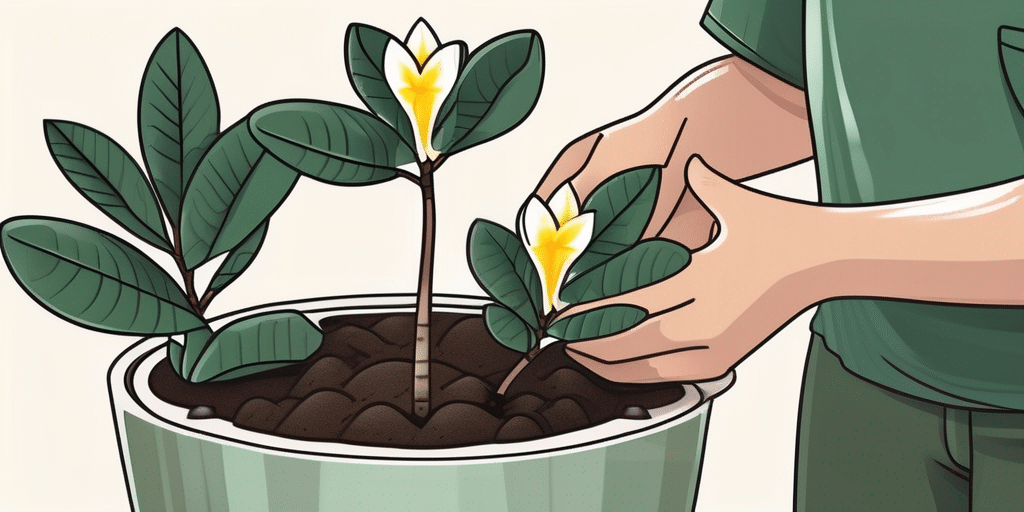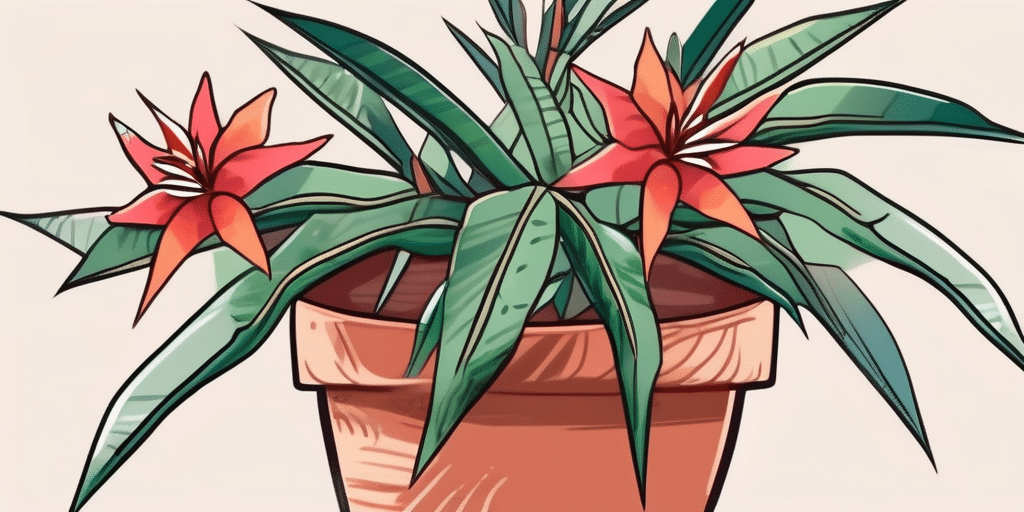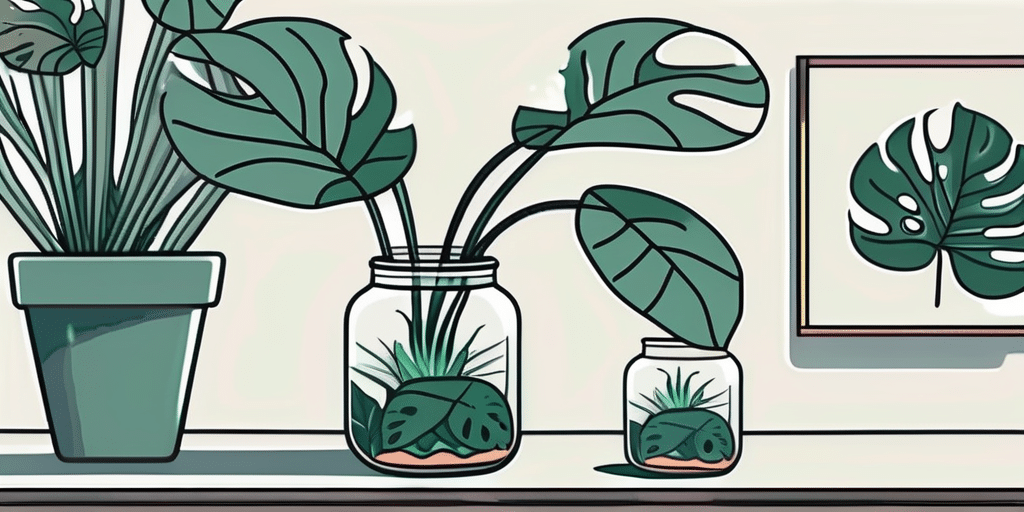If you’re looking to add a touch of tropical beauty to your indoor space, prayer plants are an excellent choice. These unique houseplants are known for their striking foliage and fascinating behavior. In this ultimate guide, we’ll explore everything you need to know about prayer plants, from their origin and care requirements to common problems and, of course, how to propagate them.
Understanding Prayer Plants
Before we dive into the details, let’s first understand what prayer plants are and why they’ve become a popular choice among plant enthusiasts.
Prayer plants, with their mesmerizing foliage and captivating behavior, have earned a special place in the hearts of plant lovers around the world. Their unique characteristics and stunning appearance make them a delightful addition to any indoor garden or botanical collection.
Origin and History of Prayer Plants
Prayer plants, scientifically known as Maranta and Calathea species, are native to the tropical regions of Central and South America. These plants were first discovered in the lush rainforests of these regions in the 19th century, where they thrived in the dappled sunlight and humid conditions.
Over the years, prayer plants have been cultivated and hybridized, leading to the creation of numerous stunning varieties with different leaf patterns and colors. Their rich history and cultural significance have only added to their allure, making them a sought-after plant for both experienced gardeners and beginners.
Why are They Called Prayer Plants?
The name “prayer plants” comes from the unique behavior of their leaves. During the day, the leaves lie flat, maximizing their surface area to absorb sunlight for photosynthesis. However, as evening approaches, the leaves of prayer plants begin to fold up, resembling hands in prayer or the closing of a book. This fascinating movement, known as nyctinasty, is a natural response to the changing light conditions and is believed to help protect the plant’s delicate foliage.
This distinctive characteristic has not only earned prayer plants their name but has also imbued them with symbolic meaning. The rhythmic opening and closing of their leaves have been associated with mindfulness, meditation, and the cyclical nature of life. As such, prayer plants have become more than just ornamental houseplants; they are cherished for their ability to bring a sense of peace and contemplation to any space they inhabit.
Identifying Different Types of Prayer Plants
Now that we have a grasp on the background of prayer plants, let’s explore some popular varieties you can find in nurseries and online stores.
Prayer plants, known for their unique ability to fold their leaves upwards at night, belong to the Marantaceae family, which includes several stunning species. These plants are not only admired for their fascinating leaf movements but also for their intricate patterns and vibrant colors that make them a favorite among houseplant enthusiasts.
Maranta Leuconeura
Maranta leuconeura, or the red prayer plant, is one of the most well-known species. It features vibrant green leaves with striking patterns of red veins. This variety is incredibly popular due to its mesmerizing foliage and relatively easy care requirements.
Native to the Brazilian rainforest, Maranta leuconeura thrives in humid environments with indirect sunlight. Its unique leaf pattern serves as a natural defense mechanism, helping it blend in with its surroundings to avoid predators. This plant’s ability to adjust its leaves according to light conditions has earned it the nickname “prayer plant,” symbolizing its daily ritual of folding its leaves upwards at dusk.
Calathea Varieties
The Calathea family offers a wide range of prayer plants with diverse patterns and colors. From Calathea lancifolia with its elongated leaves and silver stripes to Calathea orbifolia with its large, round leaves adorned with silvery-green patterns, you’ll have plenty of options to choose from.
Calatheas, commonly referred to as “living plants,” are known for their air-purifying qualities and unique leaf designs that resemble intricate paintings. These plants require consistent moisture and indirect light to thrive, making them ideal additions to indoor spaces with high humidity levels. The Calathea genus includes over 300 different species, each showcasing its own distinct characteristics, from colorful foliage to unusual leaf shapes.
Essential Care for Prayer Plants
Now that you know the basics of identification, let’s delve into the essential care tips for keeping your prayer plants healthy and thriving.
Prayer plants, scientifically known as Maranta leuconeura, are beloved for their striking foliage and unique habit of folding their leaves upwards at night, resembling hands in prayer. To ensure these beautiful plants continue to flourish in your home, it’s essential to provide them with the right care and environment.
Ideal Lighting Conditions
Prayer plants thrive in bright, indirect light. Avoid exposing them to direct sunlight, as it can scorch their delicate leaves. Place your plants near a north or east-facing window for optimal light levels. If you notice the leaves curling or losing their vibrant colors, it may be a sign that the plant is receiving too much light.
Consider rotating your prayer plant occasionally to ensure even growth on all sides and prevent it from leaning towards the light source. This simple practice can help maintain a balanced and symmetrical appearance for your plant.
Watering Requirements
Keeping the soil consistently moist, but not overly wet, is crucial for prayer plants. Aim to water them whenever the top inch of soil feels dry to the touch. Be mindful not to let the soil completely dry out, as this can cause stress to the plants. When watering, use room-temperature water to avoid shocking the plant’s roots.
Consider using a pot with drainage holes to prevent waterlogging, which can lead to root rot. If your prayer plant is in a decorative container without drainage, be cautious not to let excess water accumulate at the bottom, as this can be detrimental to the plant’s health.
Temperature and Humidity Preferences
Prayer plants prefer temperatures between 65-75°F (18-24°C). They also appreciate high humidity levels, so consider placing them near a humidifier or on a pebble tray filled with water to increase humidity around the plants. Misting the leaves regularly can also help create a humid microclimate, especially during dry winter months when indoor air tends to be drier.
During the growing season in spring and summer, consider fertilizing your prayer plant every 4-6 weeks with a balanced houseplant fertilizer. Dilute the fertilizer to half the recommended strength to avoid overfeeding, which can lead to fertilizer burn and other issues. Remember to withhold fertilization during the plant’s dormant period in fall and winter to allow it to rest.
Common Problems and Solutions
Like any houseplant, prayer plants are susceptible to a few common issues. Here are some problems you may encounter and how to address them:
Yellowing Leaves
If your prayer plant’s leaves turn yellow, it may indicate overwatering or inadequate drainage. Ensure the pot has drainage holes and adjust your watering routine accordingly. Additionally, check for any signs of pests, as they can also cause yellowing.
Yellowing leaves on a prayer plant can be a distressing sight for any plant parent. It’s essential to remember that these plants are sensitive to overwatering, which can lead to root rot and subsequent yellowing of the leaves. To prevent this issue, consider using a well-draining potting mix and allowing the soil to dry out slightly between waterings. Furthermore, providing adequate airflow around the plant can help prevent moisture-related problems.
Curling or Drooping Leaves
Curling or drooping leaves can signal underwatering or low humidity levels. Adjust your watering schedule to ensure the soil stays consistently moist, and consider increasing humidity by misting the leaves or using a humidifier.
When prayer plant leaves start to curl or droop, it’s often a cry for help from the plant. These behaviors can indicate that the plant is not receiving enough water or that the surrounding air is too dry. In addition to adjusting your watering routine, you can create a more humid environment for your prayer plant by placing a tray of water near the plant or grouping it with other plants to increase moisture levels in the air.
Pest Infestations
Prayer plants can be vulnerable to common houseplant pests, such as spider mites and mealybugs. If you notice any signs of infestation, such as webbing or visible insects, treat your plants with an appropriate organic insecticide or wipes specially designed for houseplants.
Dealing with pest infestations on your prayer plant requires prompt action to prevent further damage. Spider mites and mealybugs are common pests that can target prayer plants, sucking sap from the leaves and causing stress to the plant. To combat these pests effectively, consider using natural predators like ladybugs or applying neem oil to deter them. Regularly inspecting your plant for early signs of infestation can help you address the issue before it becomes severe.
Propagating Prayer Plants
If you’re eager to expand your prayer plant collection or share the joy of these incredible plants with others, propagation is a great option. Here are two effective methods for propagating prayer plants:
Division Method
- Carefully remove the prayer plant from its pot and gently separate the root ball into two or more sections.
- Ensure each section has healthy roots and leaves.
- Repot the separated sections into fresh, well-draining soil.
- Water the newly potted divisions thoroughly and provide the same care as mature prayer plants.
Stem Cuttings
- Select a healthy stem from your mature prayer plant, preferably one with several leaves.
- Using a clean, sharp knife or scissors, cut the stem just below a node.
- Remove any leaves from the lower portion of the stem.
- Place the stem cutting in a glass of water, ensuring the node is submerged.
- Change the water every few days to prevent bacterial growth.
- Once roots have formed, transfer the cutting to a small pot filled with well-draining soil.
- Continue caring for the cutting as you would for a mature prayer plant.
With these propagation methods, you’ll soon have a beautiful collection of prayer plants to enjoy or share with fellow plant enthusiasts.
Prayer plants offer a captivating combination of stunning foliage and unique behavior. By providing them with the right conditions and a little bit of care, you can enjoy the beauty and tranquility these plants bring to your home. Remember, each variety may have slightly different care requirements, so always consult specific care instructions for the prayer plants you decide to grow. Happy gardening!
Join Our Green-Thumbed Community!
Ready to transform your home with the serene beauty of prayer plants? Subscribe now to How to Grow Everything and learn how to build the garden of your dreams! Receive personalized gardening advice tailored to your location, grow zone, and experience level. Our family is dedicated to helping you flourish in your gardening journey with the best tips, special offers, and deals—all 100% free and delivered straight to your inbox. No spam, just pure plant-growing wisdom. Subscribe for free today and let’s grow together!





